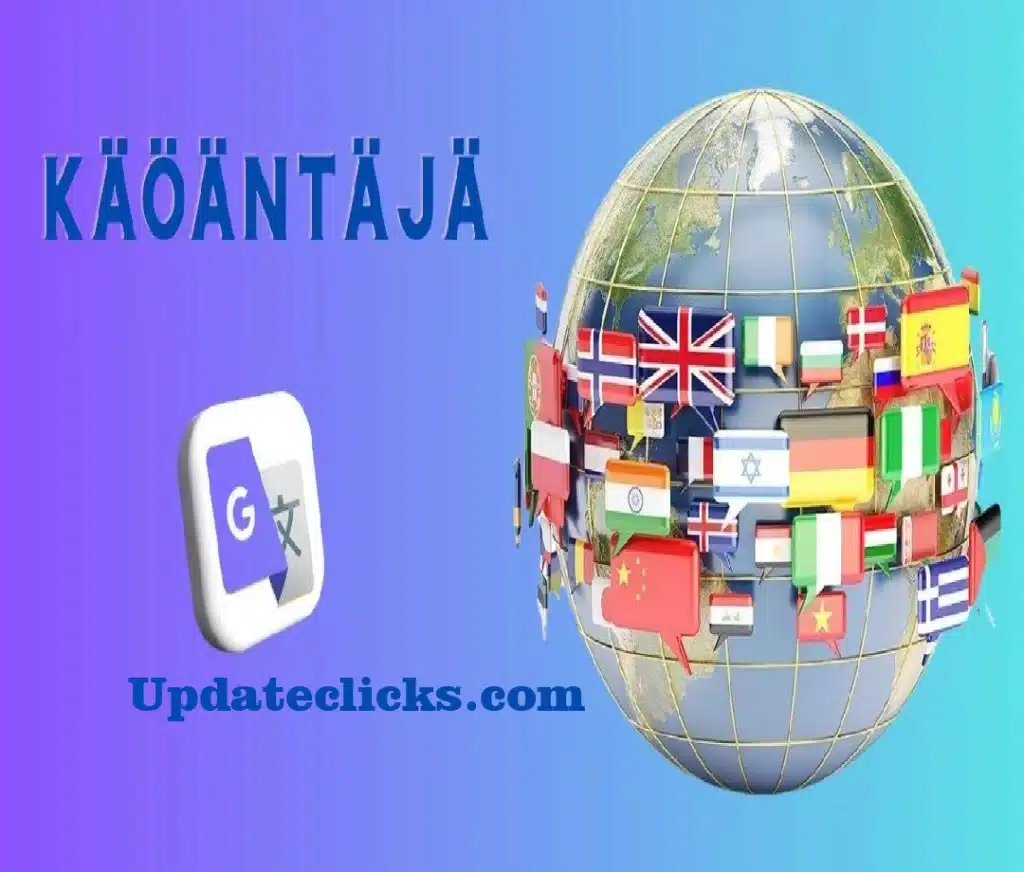
In a world that’s increasingly interconnected, the ability to communicate across languages is paramount. Enter käöäntäjä, a versatile tool revolutionizing the way we bridge linguistic gaps. From personal interactions to global business ventures, käöänntäjä is reshaping communication as we know it.
What is käöäntäjä?
Käöäntäjä, derived from the Finnish word for “translator,” encompasses a range of technologies designed to facilitate language translation. Whether it’s a written document, spoken conversation, or even visual text, Although käöäantäjä can swiftly interpret and convey meaning across languages.
Importance of Käöäntäjä
In a multicultural society, käöä ntäjä fosters inclusivity by breaking down language barriers. It enables seamless communication in diverse settings, promoting collaboration, Moreover, understanding, and cultural exchange.
Types and Categories
Machine Translation
Käöän täjä relies heavily on machine translation algorithms to render text from one language to another. Although These algorithms analyze linguistic patterns and context to produce accurate translations in real-time.
Human Translation
While machine translation dominates the digital landscape, However, human translators offer a level of nuance and cultural sensitivity that machines cannot replicate. Human translation services are indispensable for complex or culturally specific content.
Interpretation Services
Beyond written text, käöäntäjjä encompasses interpretation services for spoken language. Whether it’s simultaneous interpretation at conferences or consecutive interpretation in one-on-one settings, these services ensure fluid communication across languages.
Symptoms and Signs
Accuracy Challenges
Despite advancements, käöäntäjaä is not without its flaws. Ambiguities, idiomatic expressions, and linguistic nuances pose challenges for accurate translation, leading to occasional errors or misinterpretations.
Cultural Sensitivity
Translation goes beyond mere word substitution; it requires an understanding of cultural context. Although, Without this sensitivity, käöänttäjä may inadvertently convey unintended meanings or offend cultural sensibilities.
Causes and Risk Factors
Linguistic Complexity
Languages vary widely in structure, syntax, and idiomatic usage, making translation a complex endeavor. Moreover, The intricacies of grammar, word order, and cultural connotations contribute to the difficulty of accurate translation.
Technological Limitations
While käöänttäjä continues to evolve, it remains constrained by current technological capabilities. However, Machine learning algorithms rely on vast datasets for training, and gaps in data or linguistic diversity can impact translation quality.
Diagnosis and Tests
Translation Quality Assessment
Measuring the accuracy and fluency of translations is crucial for evaluating käöänntäjä performance. Although Quality assessment metrics, such as BLEU (Bilingual Evaluation Understudy), assess linguistic similarity between human-generated and machine-translated texts.
User Feedback
User feedback provides valuable insights into käöäntäjjä performance in real-world scenarios. Moreover, By soliciting feedback from users, developers can identify areas for improvement and refine translation algorithms accordingly.
Treatment Options
Neural Machine Translation
Neural machine translation (NMT) represents a significant advancement in käaöäntäjä technology. By utilizing deep learning neural networks, Although NMT models can capture complex linguistic patterns and produce more natural-sounding translations.
Customization and Adaptation
Tailoring käöäntäjjä to specific domains or industries enhances translation accuracy and relevance. Moreover, Customized models trained on domain-specific data can better handle specialized terminology and context.
Preventive Measures
Continuous Improvement
The key to enhancing käöäntäjä performance lies in continuous iteration and refinement. Although By incorporating user feedback, updating training data, and refining algorithms, developers can improve translation quality over time.
Cultural Awareness Training
For human translators and interpretation services, cultural awareness training is essential. Moreover, Understanding cultural nuances, taboos, and communication styles is crucial for delivering accurate and culturally sensitive translations.
Personal Stories or Case Studies
Bridging Language Divides
Sarah, a freelance graphic designer, relies on käöäntäjä to communicate with international clients. Although With käöäntäjä, Sarah effortlessly collaborates with clients from diverse linguistic backgrounds, expanding her client base and portfolio.
Breaking Down Barriers
Carlos, a medical researcher, uses käöäntäjä to access and contribute to global research initiatives. With käöäntäjä, Carlos overcomes language barriers, Moreover, sharing insights and collaborating with colleagues worldwide to advance medical knowledge.
Expert Insights
Dr. Li Wei, Linguistics Professor
“Käöäntäjä represents a paradigm shift in language communication. Although While technology has made remarkable strides, human intuition and cultural understanding remain indispensable for accurate translation.”
Prof. Maria Gomez, Translation Studies
“The future of käöäntäjä lies in hybrid approaches that combine the efficiency of machine translation with the cultural sensitivity of human translators. Moreover, Collaboration between humans and machines will drive the next generation of translation technologies.”
Conclusion
Käöäntäjä is more than just a tool; However, it’s a gateway to global communication and understanding. By harnessing the power of technology and human expertise, käöäntäjä is revolutionizing the way we connect across languages and cultures.